A Vajrayogini pilgrimage… (part 1)
15 Jan
Happy 2014 guys and I know I have been 2 weeks late in blogging about this but better late then never… Over Christmas last year, I took 22 (including myself, Su Ming (the main organiser) and Nicholas Yu) intrepid pilgrims seeking an intimate spiritual journey – a pilgrimage of sorts to Nepal. Needless to say, I was the tour guide since I had been the author of the Vajrayogini Power Places In Nepal coffee table book. The journey began on foot traversing the colorful and busy streets of Thamel in the midst of the wintery air. It was 16 degrees at midday and it dips below 10 after dinner time. Needless to say, I dread to leave the comfort of my heated hotel room after dinner. Fortunately, we were staying in the new and posh Siddhi Annex of Kathmandu Guest House where there was central heating.
Thamel is a mecca for offbeat mountain trekkers, tourists, shoppers and pilgrims and it is also a great introduction to Kathmandu valley. The street is a riot of color and shops hawking all manner of woolly jackets, pashminas, jewellery, statues and thangkas lending a festive atmosphere to the otherwise dusty streets. Malaysian pilgrims being Malaysians were mesmerised and tempted but all shopping instincts were put on hold as we were on pilgrimage and so we marched on through the streets crossing what seemed like a sea of trishaws, bikers, pedestrians and pedlars.
After traversing what seemed like lifetimes through the sea of Samsara/Nepalese folks, we arrived at the shore of liberation – Itum Bahal. Bahal meaning a traditional Nepalese courtyard. We entered a narrow doorway and the sight of a simple shrine flooded through our senses. It was a simple little shrine to the goddess Drolkar (Tib), Seto Tara (Nepalese) or White Tara. I guess the pilgrims were underwhelmed by the simplicity of the shrine. I had to tell them about the significance of the central image (flanked by newer statues of Yellow and Green Tara). The White Tara image apparently is very old and according to Kyabje Trijang Rinpoche, this image had flown in from Tibet to benefit the people of this region. She’s highly blessed and I just found out on the net that she is also a talking Tara – a magical experience that occurs to the faithful and the highly attained. In reverence, we offered garlands of marigold flowers, butterlamps, circumambulation, mantras and prayers.
A local Nepalese woman came by to offer a platter of offerings to Tara.
The unassumingly sacred image of White Tara is in the center of the shrine amidst garlands and various offerings.
Pilgrims doing their rounds around the shrine to Tara. Told them to pray not for themselves but for their loved ones. I recall rinpoche telling us to think on a higher more altruistic level when going on a pilgrimage. When all was done, we filed out of the courtyard into the busy streets again and moved on to another nearby shrine… well, more like a temple in terms of size and grandeur. This is a temple to Seto Machindranath and it is decked out with various elaborate carvings of various emanations of the Buddha of Compassion all around it. Check out the wonderful pictures…
According to Wikipedia…
Seto Machindranath,also known as White Machindranath, Aryavalokitesvara, Karunamaya and Jamaleswor is a deity worshiped by the Hindus and Buddhists in Nepal. The temple of Seto Machindranath is located in Jana Bahal(also known as Machhindra Bahal). A place located between Ason and Indra chowk,Kathmandu and is believed to have been established around the 10th century. Seto Machindranath is worshipped by the Hindus as the god of rain and the Buddhists worship the deity as an aspect of Avalokiteshvara.
Every year the deity is placed in a chariot(also known as Rath) and the chariot is paraded around Kathmandu. This festival is known as Jana Baha Dyah Jatra. The deity is bathed and repainted every year as a ritual that symbolizes the changes occurring throughout our lives.
It is believed that during the rule of King Yakshya Malla, in a place called Kantipuri people used to bathe in the holy river and visit Swayambhunath this led them to heaven after death. Once Yamraj(god of death) came to know the power of Swayambhunath and he visited the holy temple. During his return from the temple he was captured by King Yakshya Malla and his Tantric guru and demanded immortality and would not let Yamraj leave. So Yamraj prayed to Arya Awalokiteshwor(Seto Machindranath) to free him. The god heard his prayer and instantly appeared from the water. The god was white in color with eyes half closed. He then told the king to build a temple where Kalmati and Bagmati meet and to organize chariot procession so that the god could visit the people and bless them with happiness and long life.
The chariot procession festival of Seto Machindranath is celebrated during the month of Chaitra. This is a three days long festival. The chariot of Seto Machindranath is pulled from place to place during these three days. Each day when the chariot has reached its destination a group of soldiers fire their rifles into the air.
On the first day the deity is brought to Jamal by the priests. Then it is pulled to Asan, Kathmandu via Ratna Park and Bhotahity. The next day it is pulled from Asan Kathmandu to Hanumandokha. Finally it is pulled to Lagantole via Maruhity and Jaisideval. During all three days people come and pay their respect to the god.
In the month of Poush every year the deity is bathed and repainted. In this event the deity is brought into the courtyard of the temple. All of the ornaments and clothes of the deity are taken off. Then the deity is bathed with several containers of water both cold and hot,milk, ghee and honey. All of the actions are carried out by the priests of the temple. Main highlight of this event is that the living goddess Kumari attends this ritual.
But according to Rinpoche, this Chenrezig/Avalokiteshvara image is a self-arisen statue meaning it arose naturally and is believed to have ‘arisen’ from sandalwood. This image is known as Jowo Samling Karmo by the Tibetans and is believed to be part of a set of 3 similar statues known as the The Three Self-Arisen Brothers. The other statue is believed to be in Jokhang cathedral in Lhasa Tibet and another in the possession of the Dalai Lama in Dharamsala. Some of the pilgrims were staring at the statues on the poles (as depicted in the picture above) just outside the temple and I explained to them that they were all various statues of Chenrezig.
The pilgrims did their rounds and were reciting mantras, offering prayers, aspirations in front of the sacred image here. All Nepalese shrines had little bells hung over the window that peer into the inner sanctum of the shrine. Pilgrims ring these little bells as if calling the Gods to attention but I told the pilgrims that they were an offering of sound to the Buddha.
Halfway as the pilgrims slowly filed in to make their prayers, Su Ming grabbed my hand and we went into the inner sanctum and knelt down just a feet away from the image and we did our prayers there. Su Ming told me to pray for Rinpoche, which I did and uttered an additional prayer I recalled that Rinpoche told me to recite at holy places. I am glad I memorized that prayer. After the prayers, the photographers in our group went trigger happy with the camera as almost every angle is a National Geographic moment. I must say that I thoroughly enjoyed the atmosphere of this ancient temple and felt a deep sense of serenity and I even noticed that my achy feeling of flu (that I felt coming on to me) subsided somewhat.
That’s all for now… more to come… Keep your eyes and ears peeled, folks!

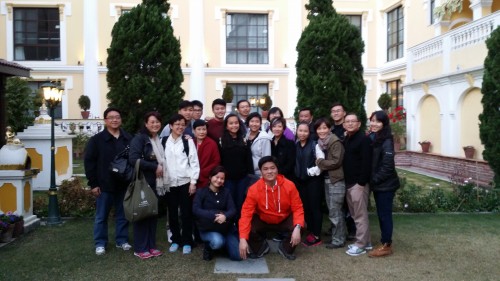
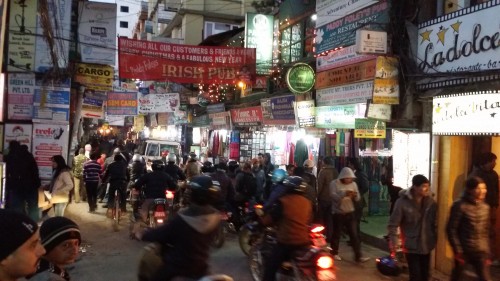
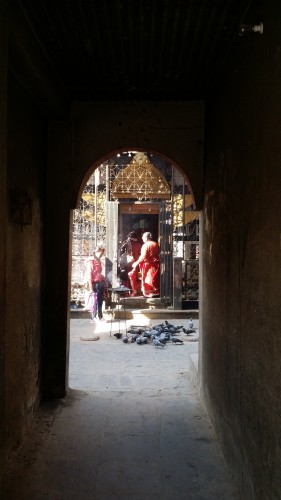
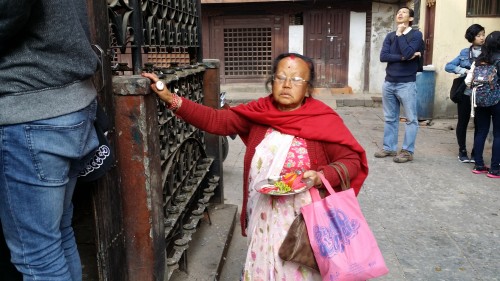
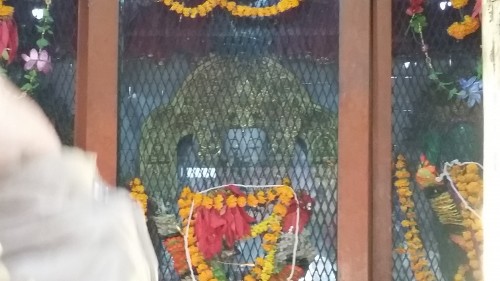
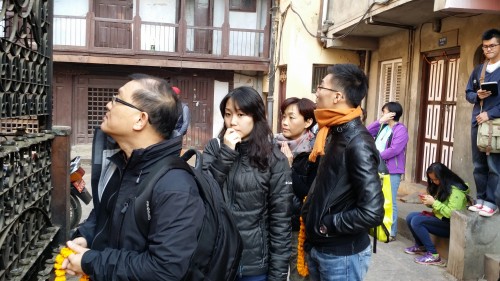
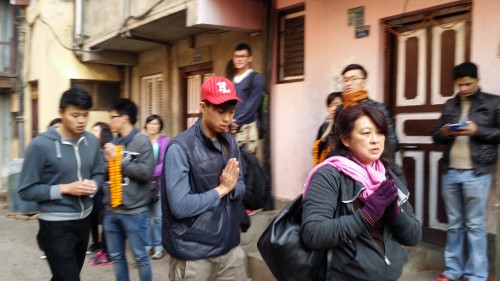
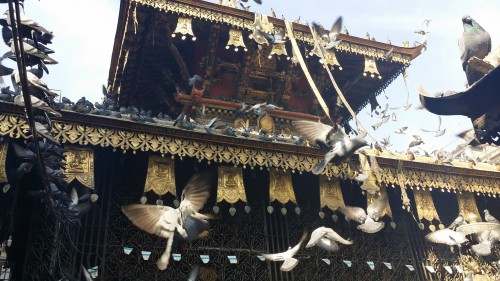
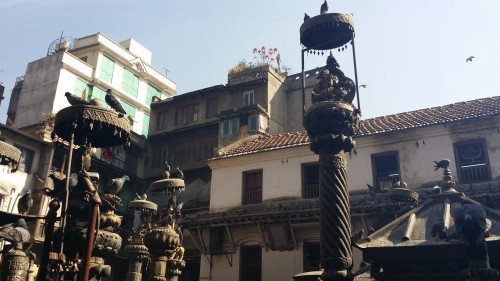
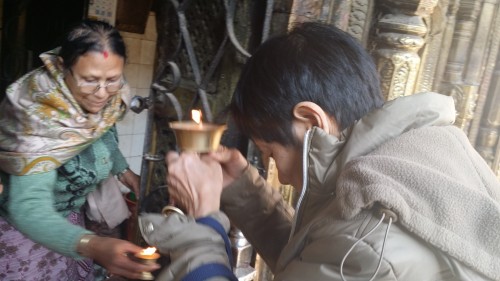
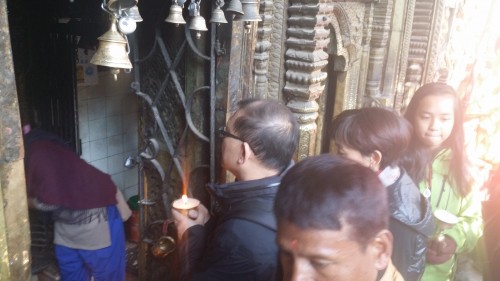
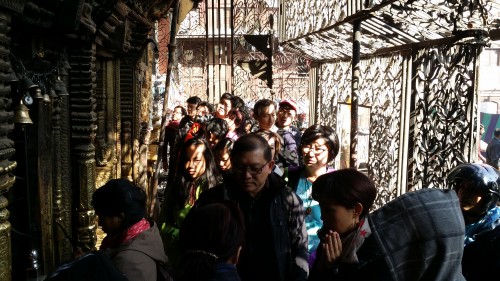
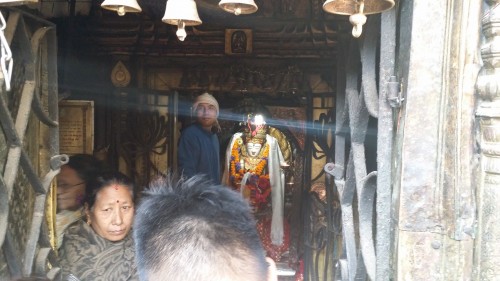




No comments yet